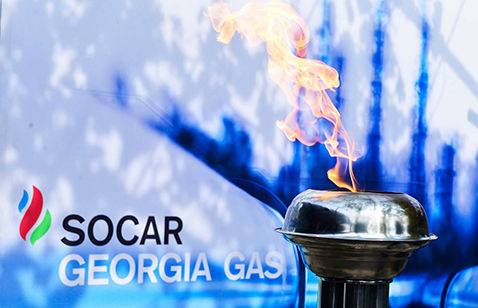Georgia Quits Russian Gas Over Azerbaijani Pipeline Gas Imports
- Mariana Liakopoulou
- Jan 12, 2018
- 4 min read

Following a 2006 decision by the Georgian government to liberalize the small-sized, but largely import-dependent, national gas market, the country turned to Azerbaijan in order to diversify its energy options away from ITERA’s and subsequently Gazprom’s export monopolies, already established at the time. As the South Caucasus Pipeline Expansion (SCPX) nears completion within 2018, and more gas from Shah Deniz 2 is scheduled to reach Georgia by 2019 increasing the country’s gas share in form of a transit fee up to 800MCM/a (5% of the 16BCM/a from SD2), Tbilisi is brought closer to the sought-after tighter energy partnership with Baku. According to the recently approved natural gas balance for 2018, Azerbaijan’s state energy firm SOCAR and the Shah Deniz consortium are going to turn into Georgia’s primary gas suppliers, providing 1.866BCM and 813.9MCM, respectively. A further 9.4MCM will be locally mined, the Georgian Ministry of Economy revealed. This means that Georgia won’t have to buy any natural gas from Russia in the current year.
Serving as a vital transit corridor for the conveyance of Caspian oil and gas to the Turkish and EU markets, Georgia, who approximately consumes a total of 2.2-2.4BCM/a, is at the moment engaged under two contracts with the SCP and SD consortia for optional (up to 5% of gas transported through the SCP) and supplemental gas (up to a maximum of 500MCM/a under special terms), set to expire in 2022 and 2025. The country has also finalized a separate supply agreement with SOCAR for the purchase of gas via a pipeline from the Gazakh district of Azerbaijan, whose throughput capacity is expected to reach 1.5BCM/a after completion of necessary maintenance work.
For the past several years, Gazprom has been supplying Armenia with gas via the North-South Gas Pipeline, that forms part of Georgia’s gas transmission network, by continuously renewing short-term contracts with Tbilisi. Georgia would charge 10% in kind for this Russian gas to Armenia (200MCM/a), which was added up to its social gas package and was used to balance winter peak demand.
In January 2017, Gazprom Export and Georgian Gas Transport Company agreed upon a gradual monetization of Russian gas transport activity across Georgian territory. In line with the two-year deal, that luckily doesn’t entail any ‘’take-or-pay’’ or ‘’use-or-pay’’ provisions, by 2018, the gas transit service will entirely shift to monetization, but Georgia will still be able to buy extra gas volumes at a discount ($185/1000CM, instead of the previously imposed tariff of $215/1000CM) to cover seasonal gas supply deficits. For the time being, the economic profitability for Georgia is put into question, since Russia has extended lower gas price for Armenia ($150/1000CM) until the end of 2018, a fact that might make it hard for Georgia to buy equal gas quantities with those received under the former in-kind contract, thus leading to unavoidable increases in actual tariffs for household consumers and power generation. Nevertheless, the new transit pact is harmonized with the terms of the EU-Georgia Association Agreement that requires of Tbilisi to accept the transit fee in money, and not in commodity.
Despite the notably different types of its contracts with Azerbaijan and Russia, Georgia will need to start negotiating their renewal prior to expiration dates. That is because any discussed re-export arrangement of Iranian gas towards Georgia with the help of neighboring Armenia, a state lately seeking itself a transit function, seems rather difficult to be concluded under present circumstances. For one thing, Gazprom’s full ownership of the Armenian gas transmission system would normally allow Russia to have a say in such an operation, much to the discontent of the Georgian public opinion. In addition, Armenia’s eagerness to up gas imports from Iran via the Iran-Armenia Gas Pipeline and send them over to Georgia and from that point onto the Western markets is strictly linked with Iran’s alacrity to serve as a transit route for Armenia’s gas imports from Turkmenistan. Given the year-long gas debt dispute between Tehran and Ashgabat, already decided to be settled in the International Court of Arbitration, the second precondition of Armenia’s planning now appears far from attainable. Finally, Iranian gas might in the short run prove costlier even than the Russian for Georgia, as its price would double because of the transit fee applied while on Armenian ground.
Furthermore, progress on the proposed conversion of the Samgori South Dome depleted field into a $270M underground gas storage facility (UGS) will also help bolster durable energy security in Georgia by dealing with imbalances between seasonal supply and demand. A relevant feasibility study has been carried out, while the European Bank for Reconstruction and Development (EBRD) has confirmed it is going to finance the project.
Therefore, the news that Georgia’s gas balance for 2018 has almost completely switched the national gas supply to Azerbaijan, a pure low-cost provider for Tbilisi in lack of one or more intermediate transit states, is, indeed, encouraging. Firstly, it shows the extent to which Georgia has managed to capitalize its cooperation with Baku in the context of crucial trade and energy projects, finally gaining its energy independence from Gazprom. Lastly, Azerbaijan offers Georgia an opportunity to further develop the diversification strategy the country decided to put into implementation over a decade ago, since its winter peaks might after 2020 be met with even more gas from Turkmenistan, Kazakhstan, and even Iran, shipped to Europe through the Southern Gas Corridor.
Available online at: http://www.caspianpolicy.org/news/caspian-energy-insight-january-10-2018/#3







Comments